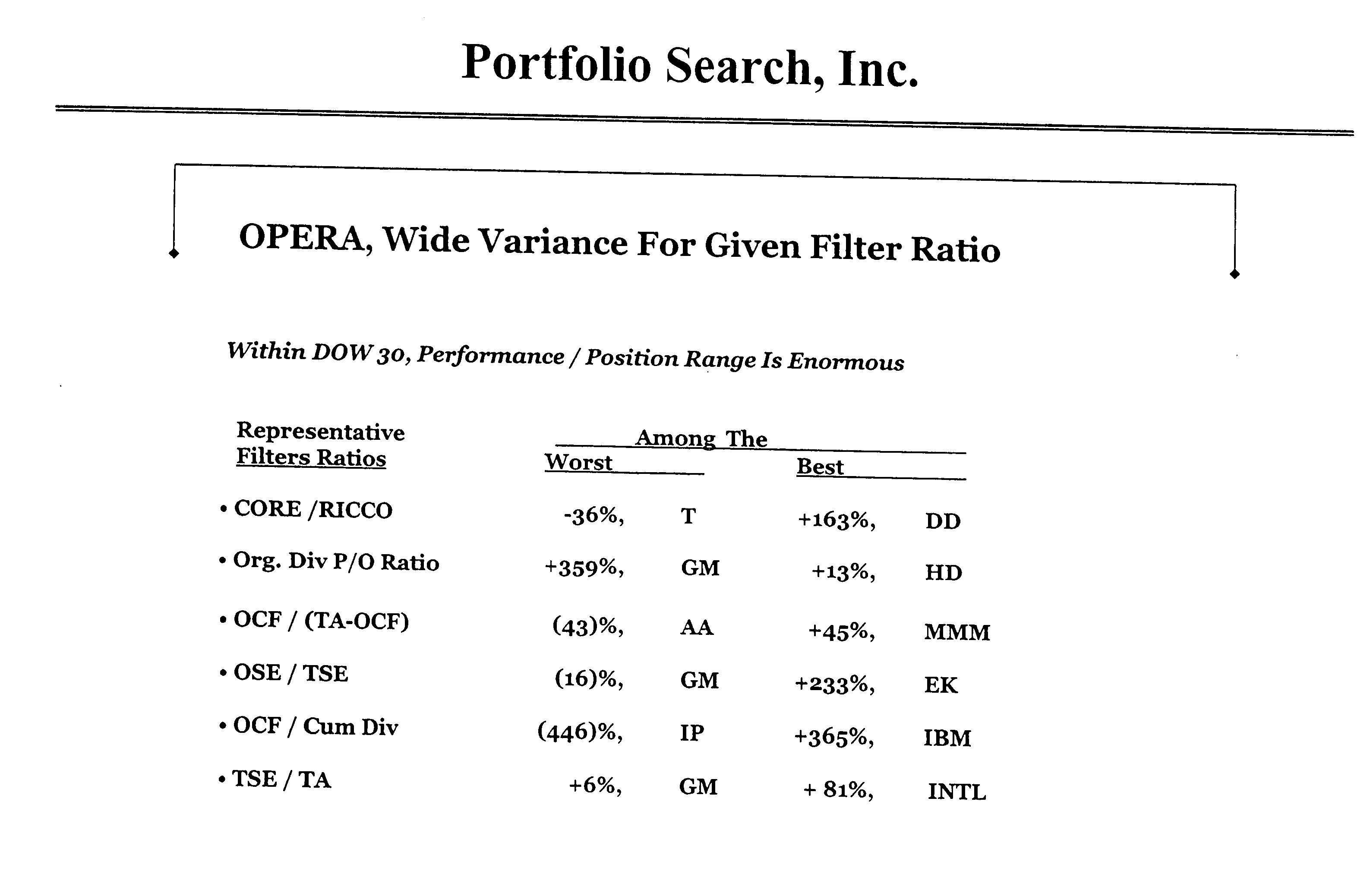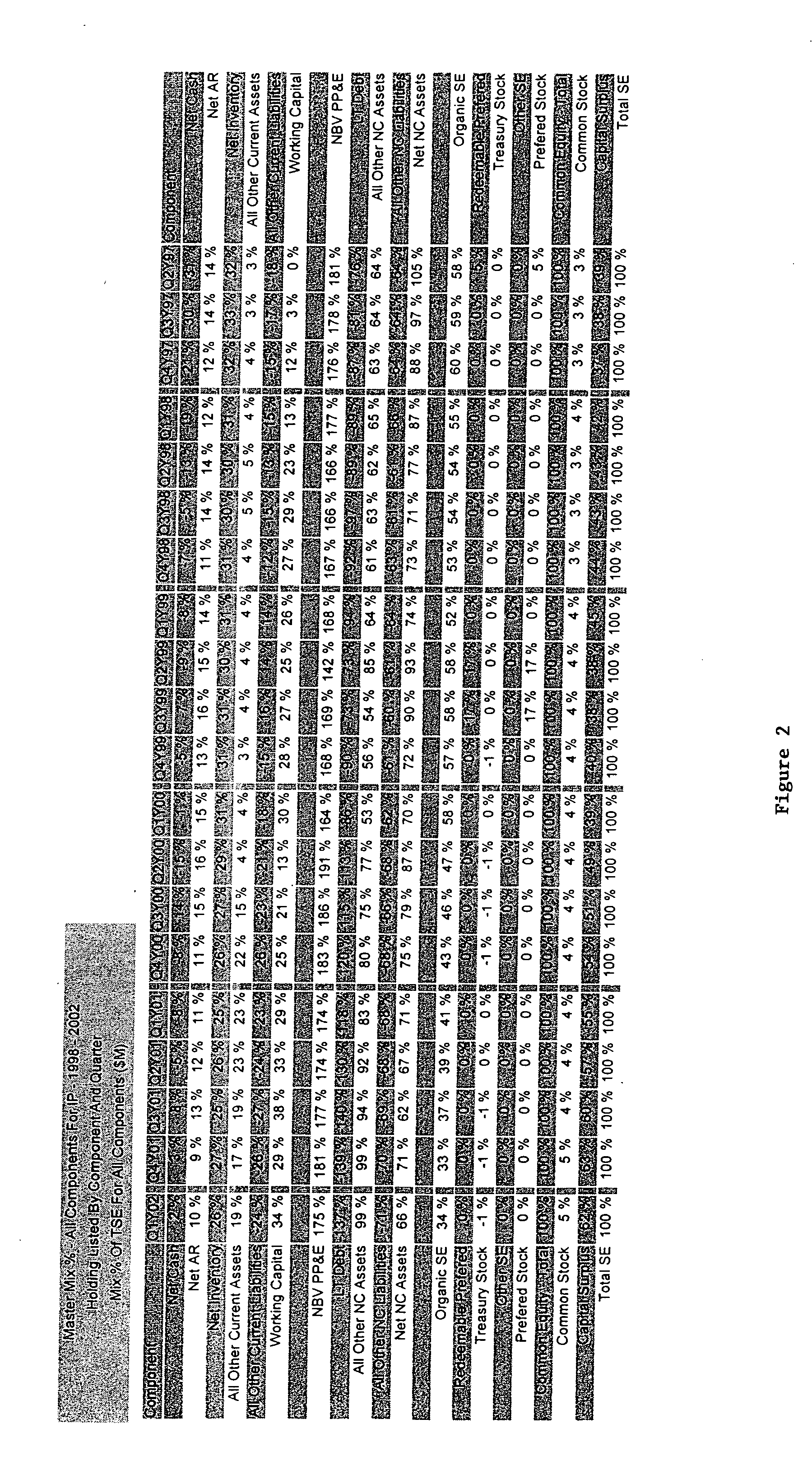Methods for evaluating the financial strength of a holding in comparison to other holdings
a technology of financial strength and portfolio, applied in the field of financial analysis methods and systems, can solve the problems of heightened legal risks, ir departments of major firms suffering from a combination of new regulatory constraints, and individual investors often lack the time, training and resources to read and interpret such filings on a regular basis, so as to level the playing field for small investors
- Summary
- Abstract
- Description
- Claims
- Application Information
AI Technical Summary
Benefits of technology
Problems solved by technology
Method used
Image
Examples
examples
GM Drill Down
As shown in FIG. 23, GM has a very high Count, ranked 28 of 29 portfolio Holdings, with a weighted REDS Flag Count of 28 (plus nine ORANGE Flags Count and only six GREEN Flags). As can be seen in FIG. 23, GM's 28 RED Flags are split as such: 16 for Level with four at-risk Cells and 12 for Flow with two at-risk Cells. For example, the first low-Count Cell is Level AQ which has two at-risk Filters: TSE / TA and OSE / TA. With respect to the first at-risk Filter, reference to FIG. 8 shows that GM's TSE ($19.6B) is only 6% of TA for an Intra-Filter Positional Score of 0.04 (4%). For example, the GM's second low-Count Cell is Level OSE with one at-risk Filter: OSE / (TL+USE). Reference to FIG. 12 shows that GM's OSE is minus 1% of TL+USE ($382.2B) for an Intra-Filter Positional Score of 0.04 (4%). For example, the GM's fifth low-Count Cell is Flow ECOP with three at-risk Filters: Cum. ECOP / Cum. RICO; Cum. ECOP / (TA-TSE) and Cum. ECOP / (TA-OSE). With respect to the first Filter, r...
PUM
 Login to View More
Login to View More Abstract
Description
Claims
Application Information
 Login to View More
Login to View More - R&D
- Intellectual Property
- Life Sciences
- Materials
- Tech Scout
- Unparalleled Data Quality
- Higher Quality Content
- 60% Fewer Hallucinations
Browse by: Latest US Patents, China's latest patents, Technical Efficacy Thesaurus, Application Domain, Technology Topic, Popular Technical Reports.
© 2025 PatSnap. All rights reserved.Legal|Privacy policy|Modern Slavery Act Transparency Statement|Sitemap|About US| Contact US: help@patsnap.com



